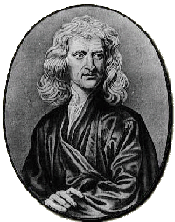The Anatomy of Black Holes
I. Welcome to an Amazing Universe
Black holes exert a strong pull on both the scientific and the popular imaginations. They often prove beyond the limits of our abilities to comprehend. Indeed, they sound like a lot of nonsense from a bad movie. Nevertheless, black holes have gone from being a "purely theoretical fancy" to being the objects of cutting-edge scientific study. We have strong evidence that black holes not only exist, but may exist in the centers of every galaxy. We have a good theory, general relativity, that describes what happens around a black hole. It is a theory which completely overturned our commonplace notion of space and time, and nowhere do we see its amazing conclusions so strikingly as around black holes. Through a study of black holes, we will begin to piece together our picture of the fundamental physics of spacetime. And no doubt, the Universe will hold many surprises for us in our quest!

|
|
Albert Einstein
|
Let us begin our journey with a brief discussion of the difference between the world as we experience it in our everyday lives (the Newtonian world), and the world we must enter in order to understand the superstrong gravity which leads to a black hole (the world of Einstein). Let us consider what is experienced by a person standing on the surface of a non-rotating moon. According to the Newtonian view, the gravitational force this person is subjected to is proportional to the product of the moon’s mass and the person’s mass, and inversely proportional to the squared radius of the moon.

|
|
Isaac Newton
|
Einstein’s view of gravity would yield a value of the force slightly greater than Newton’s value ("slightly" is a word we will define later). Let us suppose that the moon is now magically crushed. Its radius becomes smaller and smaller while its mass remains constant. According to Newton, contraction by a factor of two increases the force by a factor of four. Einstein predicts that the force increases slightly faster (there is that word again -
slightly). So in fact, the smaller the radius of the moon, the greater the difference between the force predicted by Newton and that predicted by Einstein. According to Newton, as the size of the moon tends toward a point, gravitational force tends toward infinity. According to Einstein, infinite gravitational force occurs as the radius of the moon approaches the so-called "gravitational radius" of the body (which can be far from being point-size). The size of the gravitational radius is determined by the amount of mass: the smaller the mass, the smaller the gravitational radius. For Earth, the gravitational radius is about 1 centimeter; for the Sun, its is about 3 kilometers. Thus, we come to the heart of the difference between Newton’s view of gravity and Einstein’s: if the actual size of an object is much larger than its gravitational radius, the differences in the gravitational force calculated by the two theories is extremely small. (On the Earth’s surface, for example, the difference is one billionth of the value of the force - a very
slight difference indeed!). Only when the compressed radius of the object approaches its gravitational radius do the values calculated by the two theories begin to differ significantly...and the value given by Einstein’s theory proves to be the correct one.



Download a pdf version.






